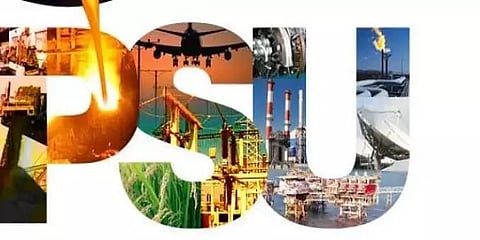
- Home
- Live Blog
- Breaking News
- Top Headlines
- Cities
- NE News
- Sentinel Media
- Sports
- Education
- Jobs

Kamal Baruah
(The writer can be reached at kamalbaruah@yahoo.com)
As India attained independence, it led to a phase of vigorous initiatives in agriculture, industry and infrastructure to make independent India self-reliant. Central and State Public Sector Undertakings (PSUs) play a leading role in India's industrialization and economic development. They are categorizedinto Central Public Sector Enterprises (CPSEs), Public Sector Banks (PSBs) and State Level Public Enterprises (SLPEs). In a PSU, majority (51% or more) of the paid share capital is held by the Central Government, State Government or partly by both.
Dr V Krishnamurthy was an outstanding leader and a visionary in Indian industry, whose contribution to the growth of India was immeasurable. He was Chairman of BHEL, SAIL, GAIL and Maruti Udyog, under whose leadership India achieved great feats in building heavy industry. He helped in setting up Government's mission by boosting investment, providing employment and supporting MSMEs. Ironically, India's 300+ PSUs are under the outcome of the policies of liberalization and privatization.
We wonder why the HMT, which was a household name for an era, failed. The timekeeper of the nation that evokes nostalgia in most Indians was shut down. The mechanical timepiece is not alone in being unable to withstand pressure from the quartz era, but one of the largest engineering and manufacturing companies of India, BHEL, continues to disappoint investors with a poor earnings performance. India's largest domestic steel maker SAIL also reported losses. The downfall of BSNL started due to intense competition and lack of network capacity. It never managed to live up to customers' expectations.
The disinvestment process gained pace in 2004 and asset sales continued year after year in the last decade. Maruti was sold to Japanese automaker Suzuki. Debt-laden national carrier Air India goes back to the Tata Group after reeling under a massive debt. Many sick PSUs put burden on our economy. Should it be run just because of legacy? State PSUs are largely reporting loss for lack of roadmap and work culture. The million-dollar question now is how to convert these into profit-making entities. So far, little has been done to revive the ailing PSUs. But at the same time there are profit-making PSUs (Maharatnas) such as IOCL, ONGC, NTPC, GAIL and Coal India etc.
Government's disinvestment decision is crucial and now facing stiff opposition from all quarters for its inept handling of the Indian economy.To meet the aggressive Budget target, the Finance Ministry has released the Rs-6-lakh-crore National Monetization Plan. If the trend continues all (non-strategic sector) PSUs will be privatized, merged or become subsidiaries of other CPSEs or closed - other than four strategic sectors that come under (a) atomic energy, space and defence (b) transport, and telecom (c) power, petroleum, coal & other minerals (d) banking, insurance and financial services. The Government means business to attract FDI, FII to finance projects. It started the process of disinvesting 5 per cent of the shares of the LIC recently.
Will such large-scale privatization be positive for the Indian equity markets? Prominent senior industry leaders have supported the asset monetization efforts, while critics and civil society have expressed their strong opposition, claiming that such thing is against the public good and collective stakes in national development.Time will tell whether NITI Aayog was right.
Amidst rampant privatization, now PSU banks are growing despite a long standing challenge from NPA and set to become profitable this year after suffering aggregate net losses due to higher provisioning in the past. Profitability has increased due to the bad loan clean-up, economies of scale gained through the merger and easy liquidity. Meanwhile, the removal of IDBI Bank from the list of PSU banks has contributed to the gain of the state lenders.
On the other side, Indian private banks have had a decade of strong growth but they have a distinctly urban focus, while the largest bank in the country SBI serves 460 million+ customers through its vast network over 22,266 branches, 65000+ ATMs and 68016+ BC outlets. It has a global presence in 30 countries too. It is now the 43rd largest bank in the world and ranked 221st in the Fortune Global 500 list of the world's biggest corporations, being the only Indian bank on the list.
SBI celebrated 67th Bank Day on July 1.The growth of SBI primarily lies with its adaptability to change with the demand and the most valuable asset of its human capital. It has served the country through rural-development initiatives and microcredit programmes and by financing major agricultural and industrial projects. With stiff competition from private banks, SBI goes with technology with a common platform YONO.
If SBI and 'Maharatna' PSUs thrived despite stiff competition, it is difficult to understand why loss-making PSUs seem to have no understanding of what ails their causes. The government should seriously explore of selling its stake in loss-making entities operating in the non-strategic sector. All it needs is a rethink about disinvestment on PSUs.